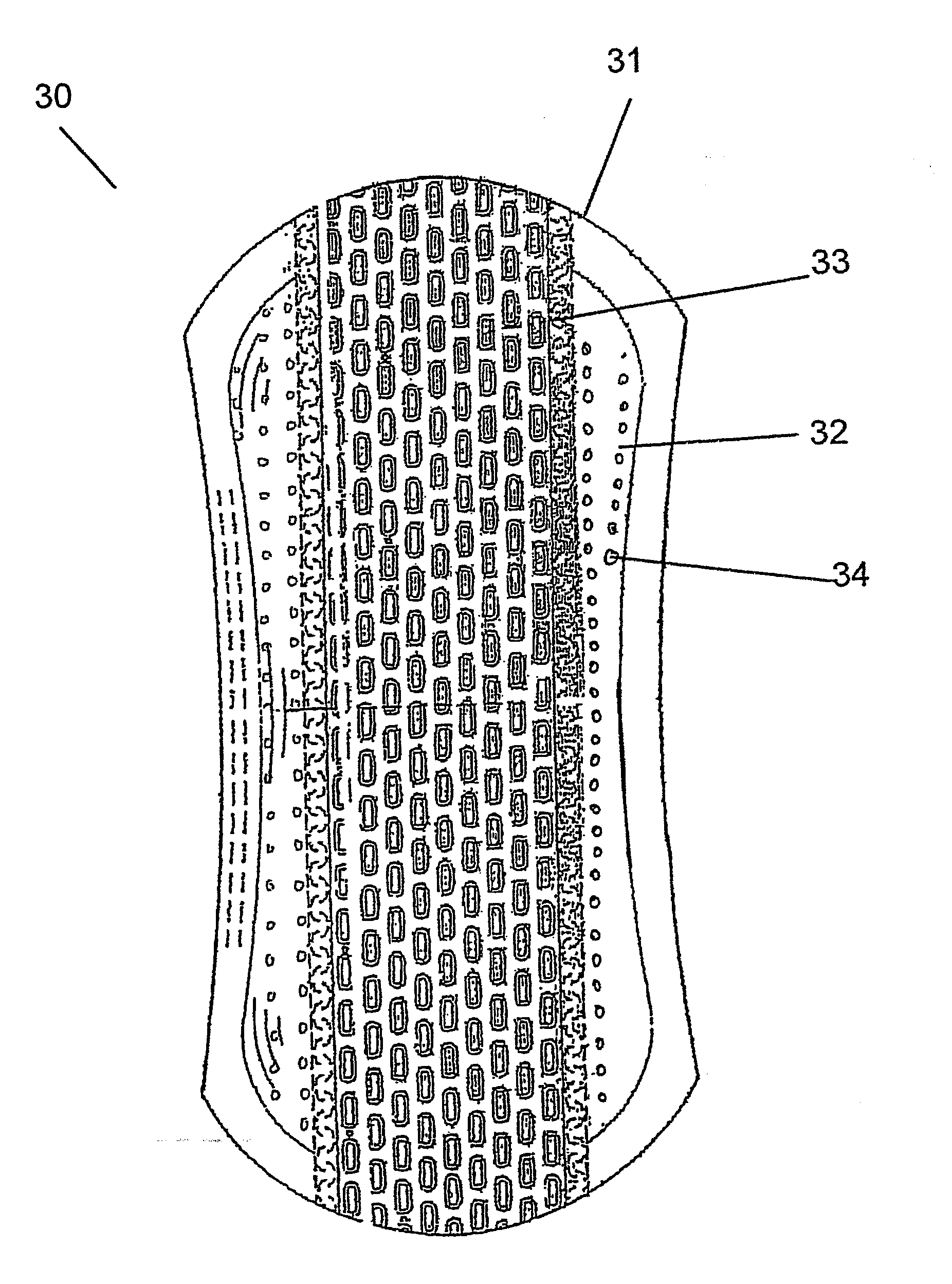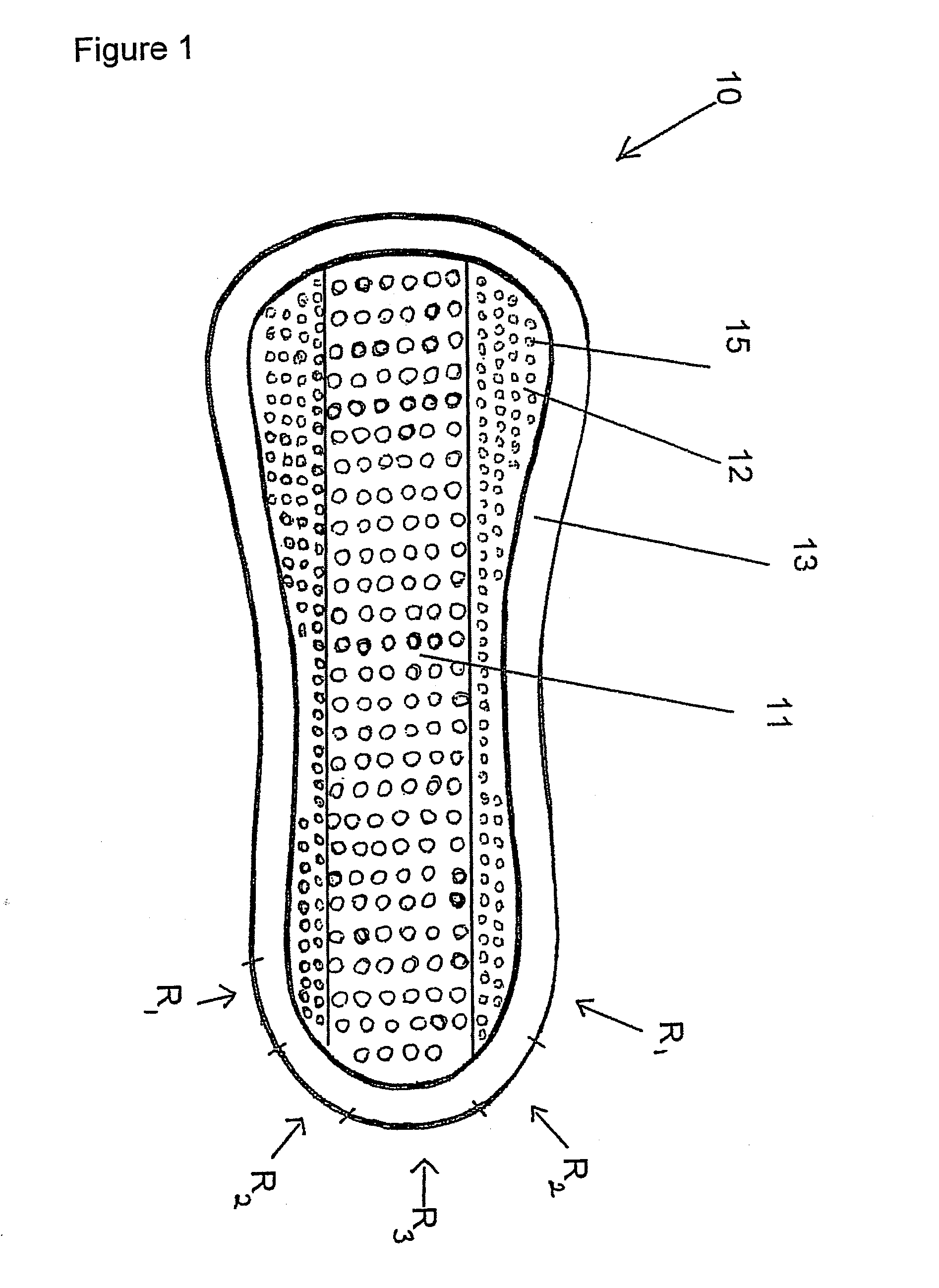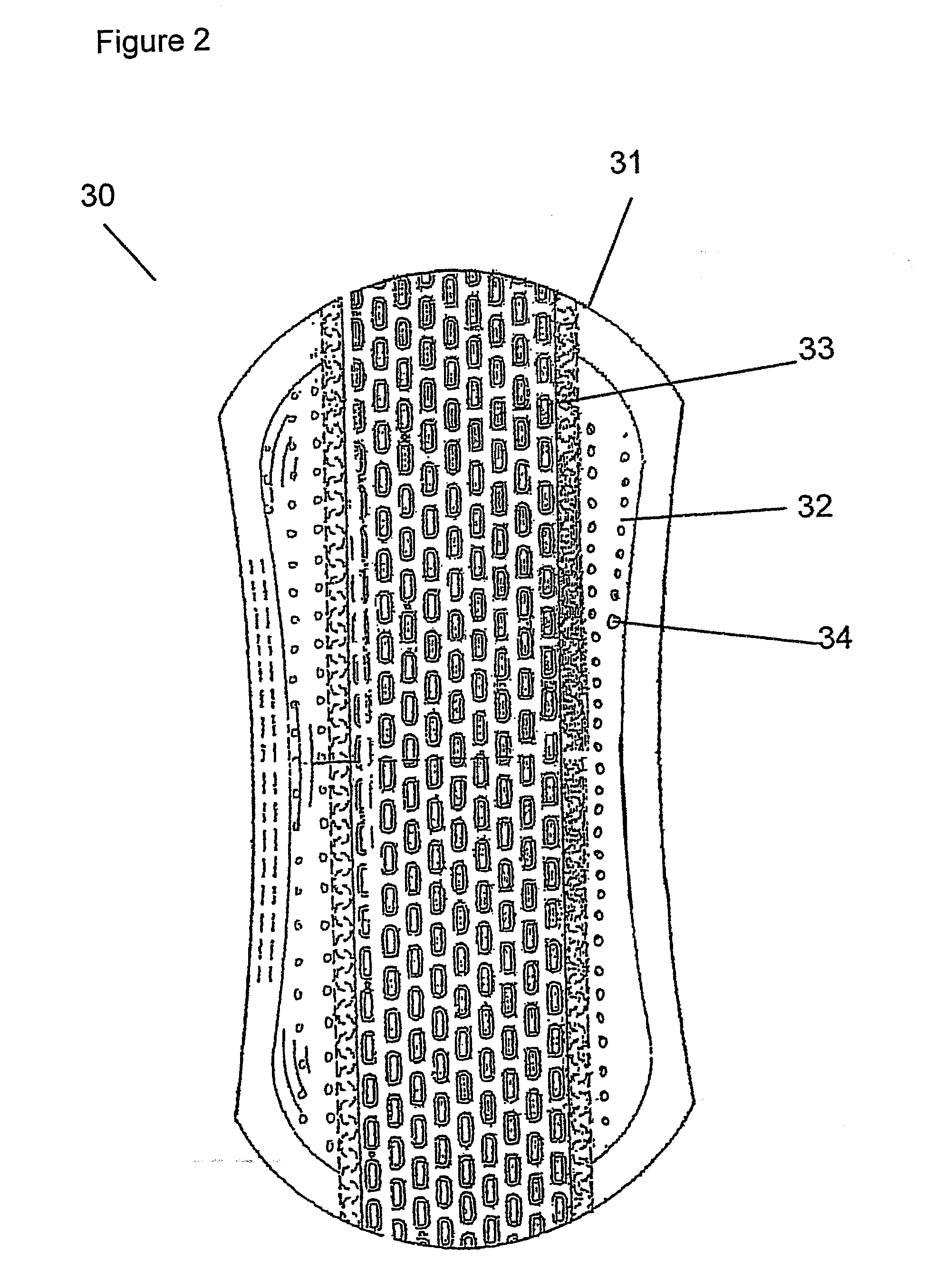Absorbent product
a technology of absorbent products and products, applied in the field of absorbent products, can solve the problems of discomfort for wearers, difficult to use the capacity of the entire absorbent structure, and the outer longitudinal parts of the product may chafe against and achieve the effects of long distance between the skin of wearers and the core of the product, good comfort, and high free volum
- Summary
- Abstract
- Description
- Claims
- Application Information
AI Technical Summary
Benefits of technology
Problems solved by technology
Method used
Image
Examples
example 1
Acquisition
[0070]Acquisition properties (acquisition time) were tested (test method no 17-28-14) by exposing the various products for a first inlet of 5 ml synthetic urine followed by a second inlet of 5 ml synthetic urine (0.9% NaCl in water) with an interval of 10 min. The results can be seen in FIG. 5, showing that Tena is significantly faster than almost all the other products for the first inlet, with exception to Always pantiliners Long, and significantly faster than all other products for the second inlet. This shows that the construction of Tena is very capable of quick acquisition of liquid (not the least of urine type), thereby reducing risk for any leakage.
example 2
DORUP (Retention)
[0071]Retention properties were tested by exposing the various products for an inlet of 7 ml liquid (synthetic urine) (see FIG. 6). For more details concerning the DORUP (retention)-experiment, reference is made to U.S. Pat. No. 6,557,398, which is incorporated herein by reference. As can be seen, Tena is significantly drier than all compared products. This shows that the retention properties of Tena is superior to compared products.
example 3
Rothwell (Absorption Capacity)
[0072]The Rothwell value (g) was tested (Method ISO 11948-1) (see FIG. 7). Tena was shown to have a significantly higher absorption capacity than all compared pantyliners.
PUM
 Login to View More
Login to View More Abstract
Description
Claims
Application Information
 Login to View More
Login to View More - R&D
- Intellectual Property
- Life Sciences
- Materials
- Tech Scout
- Unparalleled Data Quality
- Higher Quality Content
- 60% Fewer Hallucinations
Browse by: Latest US Patents, China's latest patents, Technical Efficacy Thesaurus, Application Domain, Technology Topic, Popular Technical Reports.
© 2025 PatSnap. All rights reserved.Legal|Privacy policy|Modern Slavery Act Transparency Statement|Sitemap|About US| Contact US: help@patsnap.com



